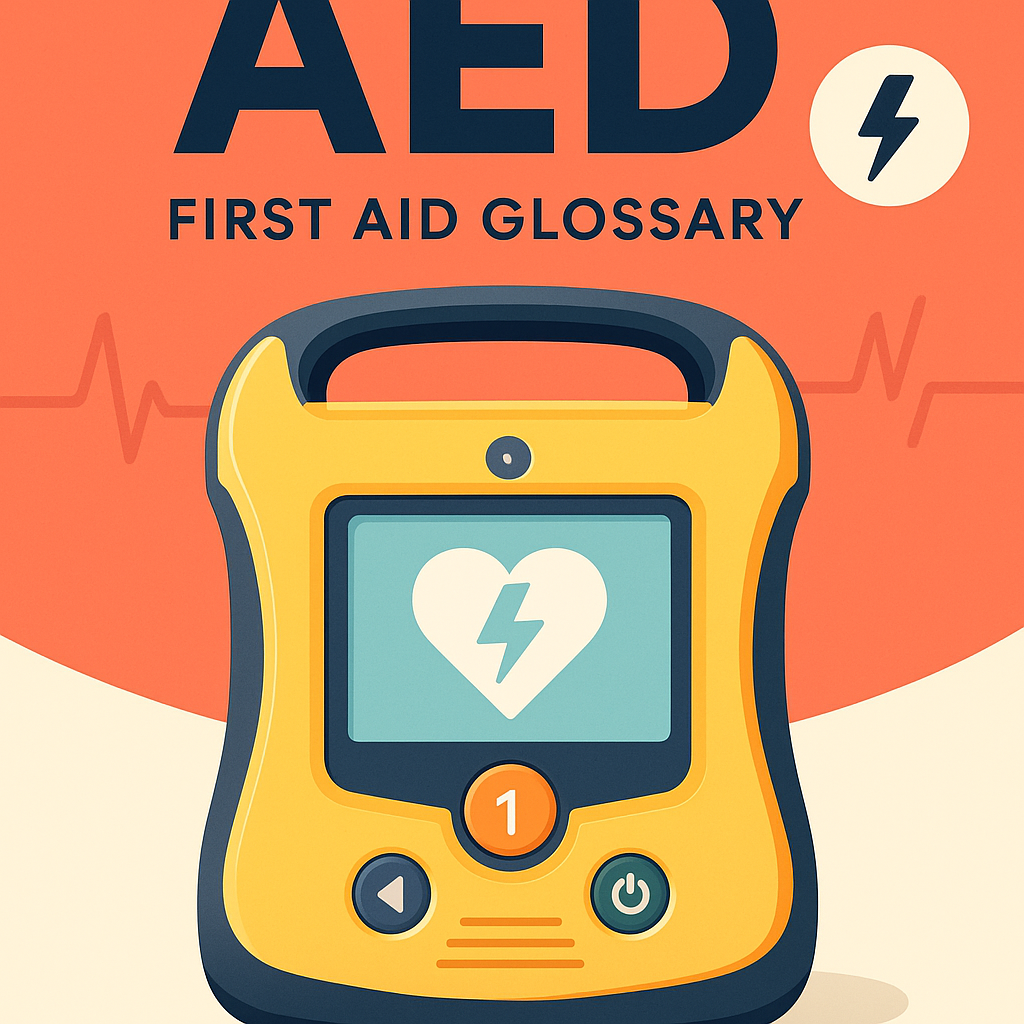- What is an AED and Why Does It Matter?
- Common Causes of Cardiac Arrest
- Signs You May Need an AED
- Step-by-Step: How to Use an AED
- 1. Call for Help:
- 2. Begin CPR:
- 3. Retrieve the AED:
- 4. Attach the Pads:
- 5. Allow the AED to Analyze:
- 6. Deliver the Shock:
- 7. Continue CPR:
- Common Concerns: Can It Cause Harm?
- Trainer Tips for Success
- Key Takeaways
- Final Encouragement
Glossary: AED Definition
AED (Automated External Defibrillator) is a portable medical device that can analyze the heart’s rhythm and deliver an electrical shock, or defibrillation, if it detects a life-threatening heart rhythm. This intervention can restore a normal heartbeat in someone experiencing sudden cardiac arrest, making it a critical tool in emergency first aid situations.
—
What is an AED and Why Does It Matter?
An Automated External Defibrillator (AED) is like having a superhero in a box—ready to save lives in moments of crisis. Imagine being at a school sports event or a crowded shopping mall, and someone suddenly collapses. An AED provides a clear path to action, stepping in as your first aid partner.
The importance of AEDs can’t be stressed enough. According to studies, using an AED alongside CPR can significantly increase the chances of survival during a cardiac arrest, making it a vital resource to have in public places, workplaces, and homes.
Common Causes of Cardiac Arrest
Understanding when and why you might need an AED helps prepare you for emergencies. Key causes include:
– Heart Disease: Plaque buildup in arteries can lead to fatal arrhythmias.
– Trauma: Severe injury can provoke cardiac issues.
– Drug Overdose: Certain drugs can shock the heart into dangerous rhythms.
– Drowning: Lack of oxygen can precipitate cardiac arrest.
Signs You May Need an AED
How can you tell when someone might need this lifesaving device? Here are signs to look for:
1. Loss of Consciousness: If someone is unresponsive—like a light switch turned off.
2. No Breathing: Check for normal breathing; gurgling or gasping sounds are not normal.
3. Weak Pulse: If you can’t detect a pulse, that’s a sign to act quickly.
Step-by-Step: How to Use an AED
![Generate a high-quality, realistic 4K image illustrating [TOPIC]. Each image should have a slightly](https://firstaidglossary.com.au/wp-content/uploads/2025/10/generate-a-high-quality-realistic-4k-image-illust-1760690824.png)
Using an AED can feel intimidating, but remember, it’s designed to guide you through the process. Think of it as a GPS for saving lives. Here’s how to use it—step by step:
1. Call for Help:
– First things first: dial emergency services (in Australia, that’s 000).
– Get someone else to call, or delegate if you’re alone. The more hands on deck, the better!
2. Begin CPR:
– Start chest compressions immediately (100-120 compressions per minute).
– This is like revving up the engine while waiting for your AED ‘pit crew’ to arrive.
3. Retrieve the AED:
– If there’s one nearby, grab it! Many public places have them labeled and visible.
– Turn on the device (most will have a prominent button).
4. Attach the Pads:
– Place the pads according to the diagrams on the AED:
– One pad on the upper right chest.
– The other pad on the lower left side, beneath the armpit.
– Think of it as placing your hands over the heart—the pads will guide the shock where it’s needed most.
5. Allow the AED to Analyze:
– The device will instruct you to stand clear. This is an important moment—no one should touch the person while the AED is analyzing their heart rhythm.
– It’s like holding your breath in anticipation of good news.
6. Deliver the Shock:
– If the AED advises a shock, follow the prompts—press the shock button when instructed.
– This is your moment of action; think of it as firing up the heart’s ‘restart’ button.
7. Continue CPR:
– After the shock, continue CPR immediately for another 2 minutes or until emergency medical services arrive.
– Think of it as a relay race: you’re passing the baton to the next responders.
Common Concerns: Can It Cause Harm?
It’s completely natural to feel worried about using an AED, especially if you’re concerned about making a mistake. Here’s the good news:
– You Can’t Make It Worse: The AED is designed to only deliver a shock if it’s really needed. If the heart is beating normally, it won’t administer a shock—it’s like a safety feature built into the tool.
– Training Isn’t Mandatory: While knowing how to use an AED is beneficial, it provides audio and visual prompts that guide you step-by-step. Quite literally, it talks you through everything—think of it as your loyal sidekick during a superhero mission.
Trainer Tips for Success
![Generate a high-quality, realistic 4K image illustrating [TOPIC]. Each image should have a slightly](https://firstaidglossary.com.au/wp-content/uploads/2025/10/generate-a-high-quality-realistic-4k-image-illust-1760690881.png)
– Always keep the AED well-maintained and trained users updated on how it works.
– Join a first aid course! Knowledge is empowering, and hands-on practice makes it less intimidating.
– Encourage friends and family to learn how to use an AED, creating a network of preparedness in your community.
—
Key Takeaways
– An AED is a vital lifesaving device that anyone can use in an emergency.
– Understanding when and how to use it can significantly increase the chances of survival for someone experiencing cardiac arrest.
– You can’t make the situation worse by acting—so step up, stay calm, and follow the AED’s prompts.
Final Encouragement
As you embark on your journey to learn first aid and AED use, remember that your preparation is going to make a difference. Being equipped with knowledge and tools can convert panic into action—and that could save a life. So don’t hesitate to take that first step; join a class, familiarize yourself with your local AEDs, and help spread the word! Every effort counts, and with each bit of knowledge, you’re becoming a superhero in your community.

Leave a Reply